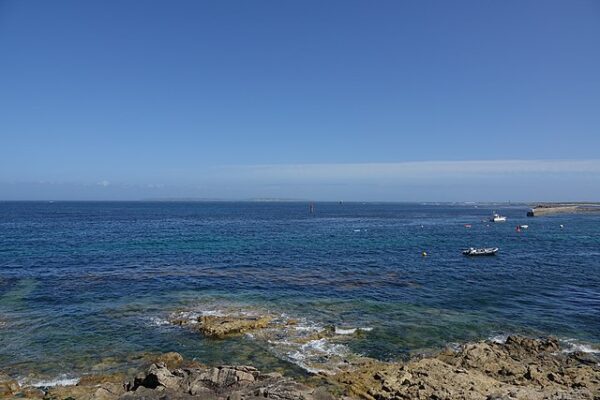
During a recent trip to the Oregon coast, Michael Sanchez, a 41-year-old middle-school band director from Vancouver, Washington, decided to practice his newest hobby: photography.
He was snapping a few pictures of waterfalls when he saw a little bird with a blue head and chestnut body and took a quick photo.
While preparing to photograph a waterfall in Oregon, Michael Sanchez snapped a photo of a small bird he spotted. He had no idea he captured rare images of a blue rock-thrush—which is native to Europe and Asia—and never seen in the U.S. @DavidMuir reports. https://t.co/wIixdvC4aq pic.twitter.com/6AXrX6no7D
— World News Tonight (@ABCWorldNews) May 3, 2024
Now he’s become the envy of bird watchers all over the world, according to NPR.
“I got all the shots that I needed and when I was finishing up, I looked behind me and, still before the sun’s fully up, I see this little bird with black feathers. I said, ‘Oh, well, what a cute little bird, why don’t I practice shooting that bird?” Sanchez, 41, told NPR on Thursday. “When I got home, I started to process the pictures from my trip and I saw that it wasn’t a little black bird — it was actually a beautifully colored blue and a chestnut bird.”
It wasn’t until he posted his pictures to Facebook that he learned his bird sighting was extremely rare: a blue rock-thrush, far from its native breeding habitat in parts of Europe, Africa and Asia.
Brodie Cass Talbott, an educator with the Bird Alliance of Oregon, was stunned by the finding after his team verified the sighting. He said the male bird is the Southeast Asian philippensis subspecies — the only one of five with a reddish-brown belly.
“It was just a real shock,” he said. “This is potentially the rarest bird that’s ever been seen in Oregon.”
Typically inhabiting rocky terrains, cliffs, and ruins, this species is well-adapted to rugged environments, the Blue Rock Thrush lives across the Atlantic. Despite its widespread presence across the Old World, the Blue Rock-Thrush is an exceptionally rare sight in the United States.
Most occurrences in the U.S. are considered vagrants, often found far from their usual migratory paths, making sightings a thrilling event for bird watchers and ornithologists. These rare appearances are usually documented along the Pacific Coast, with states like California occasionally recording isolated individuals.
The bird’s rarity in the U.S. adds a layer of excitement for birders, who might travel significant distances for the chance to observe this avian rarity. The unexpected appearance of a Blue Rock-Thrush can spark significant interest and excitement within the birding community, highlighting the unpredictability and wonder of bird migration patterns.
Smithsonian Magazine reported that “since news of the rare sighting came out, birders have flocked to Hug Point in recent days to see if they can catch a glimpse of the blue rock thrush. But, so far, they haven’t seen it.
How did the little bird end up so far from home? Perhaps it hitched a ride on an ocean-going vessel or, maybe, flew all the way across the Pacific Ocean from Asia. It may also have been blown off course by a storm.
“Maybe this bird individually just has faulty navigation,” Brodie Cass Talbott, vice president of the Oregon Birding Association and a senior educator with the Bird Alliance of Oregon, told The Guardian before adding that the sighting is “just sort of mind-bending.”









